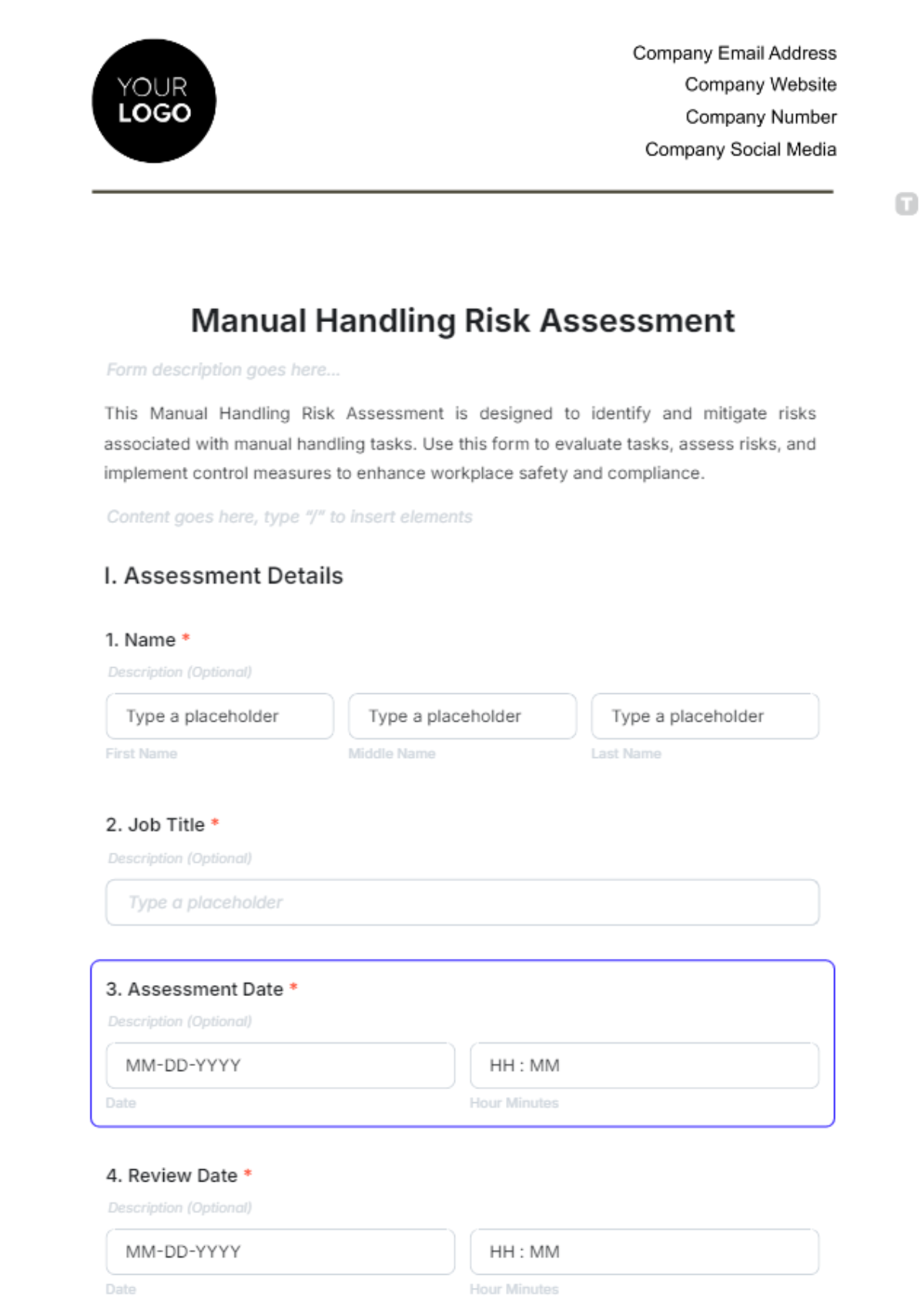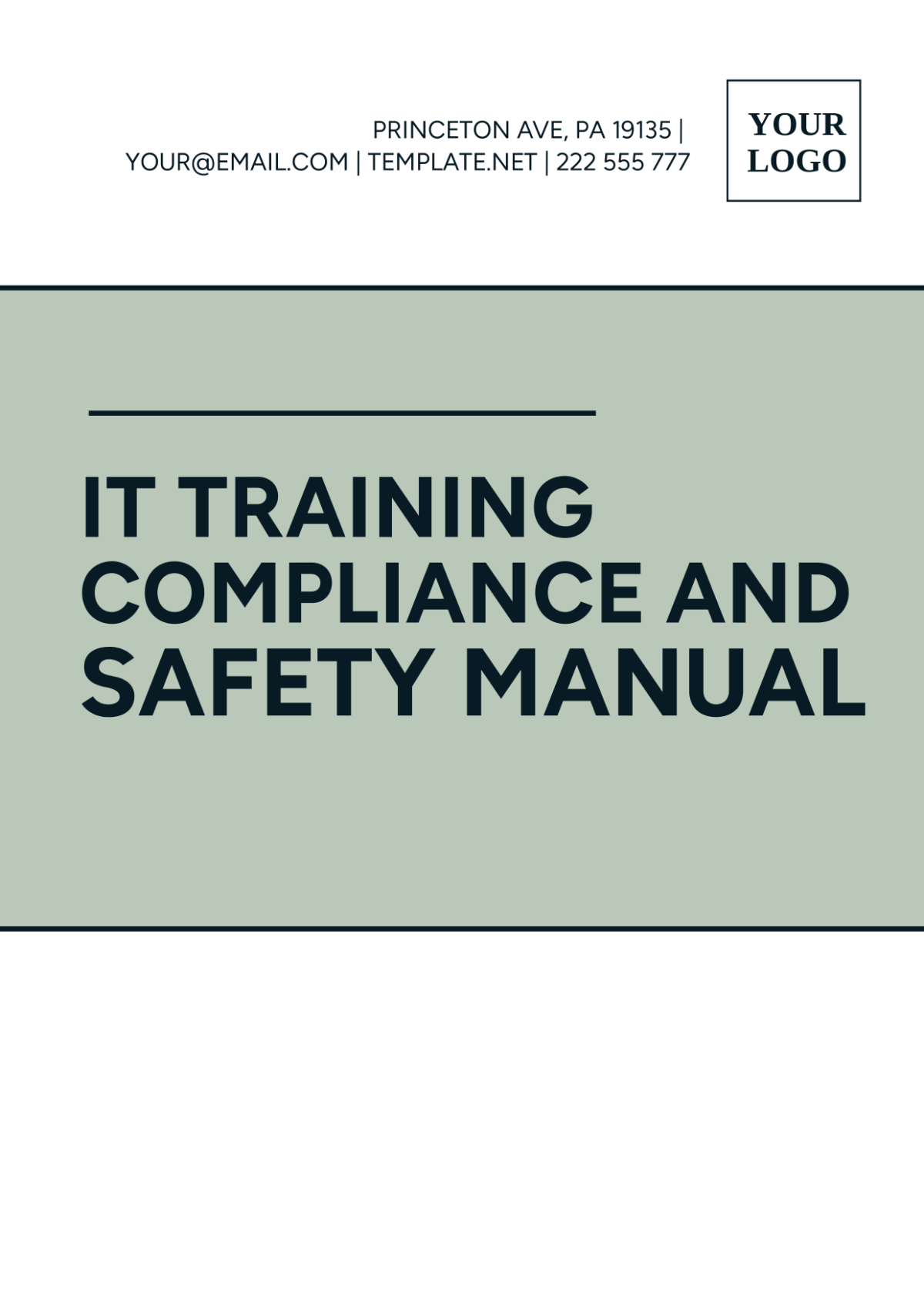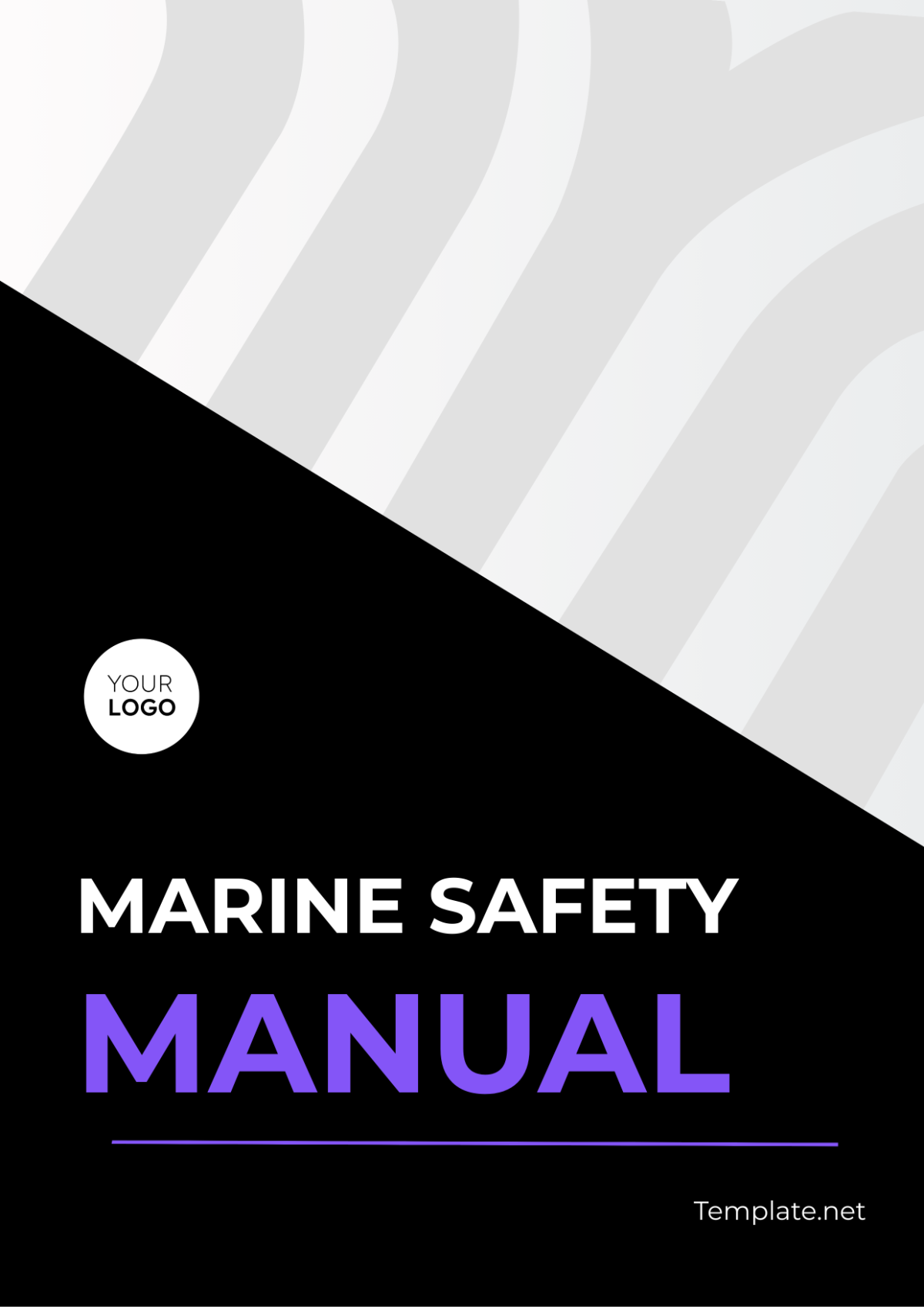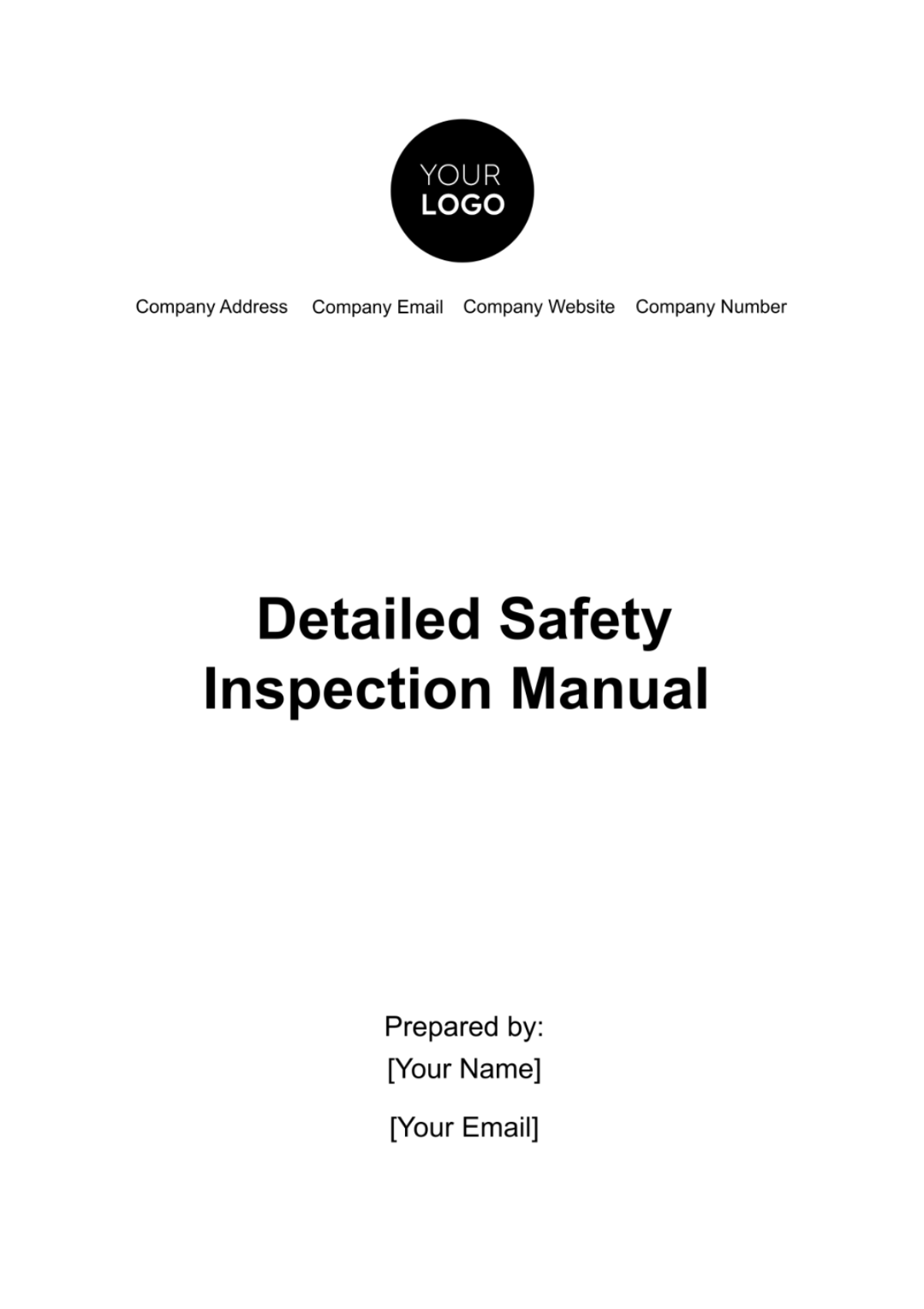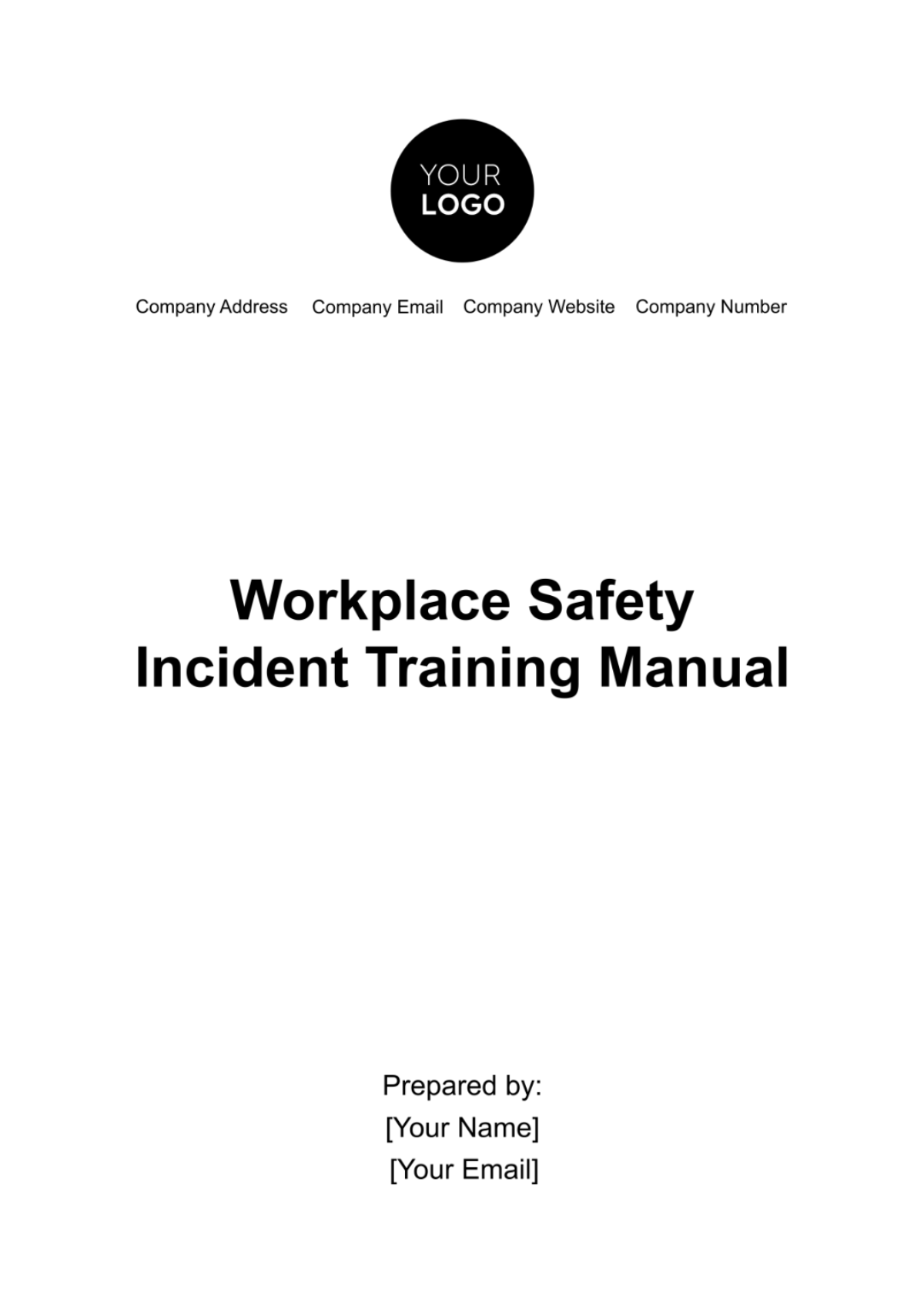Safety Management System Manual
Manual Prepared By | [YOUR NAME] |
|---|---|
Company Name | [YOUR COMPANY NAME] |
Department | [YOUR DEPARTMENT] |
Date Prepared | [DATE] |
I. INTRODUCTION
Welcome to the SAFETY MANAGEMENT SYSTEM MANUAL for [YOUR COMPANY NAME]. This manual serves as a comprehensive guide to our organization's safety management system, outlining policies, procedures, and practices aimed at promoting a safe and healthy work environment. Safety is a core value of our company, and by adhering to the guidelines outlined in this manual, we can prevent accidents, injuries, and occupational hazards.
In this section, you will find an overview of the purpose and scope of the safety management system manual, as well as key principles that guide our commitment to safety excellence. Understanding and implementing these policies and procedures are essential for protecting the well-being of our employees and maintaining a culture of safety throughout the organization.
II. SAFETY POLICY
A. Policy Statement
Commitment to Safety: [YOUR COMPANY NAME] is committed to providing a safe and healthy work environment for all employees, contractors, and visitors.
Compliance with Regulations: We pledge to comply with all applicable safety laws, regulations, and standards to ensure the well-being of our workforce.
B. Employee Responsibilities
Reporting Hazards: All employees are responsible for promptly reporting any hazards, unsafe conditions, or near misses to their supervisors or safety officers.
Safety Compliance: Employees are expected to follow safety procedures, use personal protective equipment (PPE) when required, and actively participate in safety training and drills.
III. SAFETY PLANNING AND ORGANIZATION
A. Safety Committee
Composition: The safety committee is comprised of representatives from various departments and is responsible for overseeing safety initiatives, conducting safety audits, and making recommendations for improvement.
Meetings: Regular meetings are held to discuss safety issues, review incident reports, and implement corrective actions to address safety concerns.
B. Safety Officer
Role: A designated safety officer is responsible for coordinating safety activities, conducting risk assessments, and ensuring compliance with safety regulations.
Training: The safety officer receives specialized training in safety management and stays updated on industry best practices and regulatory requirements.
IV. HAZARD IDENTIFICATION AND RISK ASSESSMENT
A. Hazard Identification
Employee Involvement: Employees are encouraged to participate in hazard identification processes by reporting potential hazards and participating in workplace inspections.
Documentation: Identified hazards are documented, assessed for severity and likelihood, and prioritized for mitigation.
B. Risk Assessment
Methodology: Risk assessments are conducted using established methodologies to evaluate the potential consequences of identified hazards and determine appropriate control measures.
Control Measures: Control measures are implemented to reduce or eliminate risks, and their effectiveness is monitored and reviewed regularly.
V. SAFETY TRAINING AND EDUCATION
A. New Employee Orientation
Overview: All new employees receive comprehensive safety orientation training to familiarize them with safety policies, procedures, and emergency protocols.
Job-Specific Training: Employees receive job-specific safety training relevant to their roles and responsibilities, including hazard recognition and safe work practices.
B. Ongoing Training Programs
Refresher Training: Regular refresher training sessions are conducted to reinforce safety knowledge, update employees on new regulations or procedures, and address any emerging safety concerns.
Specialized Training: Employees involved in specialized tasks or operations receive additional training to ensure competency and proficiency in handling specific hazards and risks.
VI. SAFETY COMMUNICATION
A. Communication Channels
Safety Meetings: Regular safety meetings are conducted to discuss safety topics, share information, and communicate updates on safety policies, procedures, and initiatives.
Notice Boards and Bulletins: Safety information, alerts, and reminders are posted on notice boards and circulated through bulletins or newsletters to keep employees informed and engaged in safety matters.
B. Safety Training Programs
Training Workshops: Specialized training workshops and seminars are conducted to address specific safety concerns, provide advanced training on safety topics, and enhance employees' knowledge and skills.
Online Training Resources: Accessible online training resources, such as e-learning modules and webinars, are available for employees to access at their convenience and expand their understanding of safety principles.
VII. INCIDENT MANAGEMENT
A. Incident Reporting Procedures
Reporting Protocol: Employees are required to report all workplace incidents, accidents, near misses, and hazardous conditions to their supervisors or designated safety personnel promptly.
Documentation: Detailed incident reports are documented, including information about the nature of the incident, individuals involved, contributing factors, and corrective actions taken.
B. Incident Investigation Process
Root Cause Analysis: Thorough investigations are conducted to identify the root causes of incidents and near misses, using techniques such as root cause analysis (RCA) to determine underlying factors and prevent recurrence.
Corrective Actions: Corrective actions are implemented based on the findings of incident investigations to address underlying issues, improve safety performance, and prevent similar incidents in the future.
VIII. SAFETY PERFORMANCE MONITORING AND EVALUATION
A. Safety Metrics
Key Performance Indicators (KPIs): Relevant safety KPIs are established to measure and monitor safety performance, including incident rates, near-miss reporting, compliance with safety procedures, and effectiveness of corrective actions.
Safety Audits and Inspections: Regular safety audits and inspections are conducted to assess compliance with safety standards, identify areas of improvement, and ensure the effectiveness of safety management systems.
B. Continuous Improvement
Lessons Learned: Lessons learned from incidents, near misses, and safety observations are documented and shared across the organization to facilitate continuous learning and improvement in safety practices.
Safety Culture Surveys: Periodic safety culture surveys are conducted to gauge employee perceptions of safety, identify areas of strength and weakness, and inform targeted interventions to strengthen safety culture.
IX. CONCLUSION
Congratulations on completing the SAFETY MANAGEMENT SYSTEM MANUAL for [YOUR COMPANY NAME]! This manual serves as a comprehensive resource for promoting a culture of safety excellence within our organization. By adhering to the policies, procedures, and practices outlined in this manual, we can create a safe and healthy work environment for all employees.
Safety is a shared responsibility, and each employee plays a crucial role in maintaining a safe workplace. Let us continue to prioritize safety in all aspects of our work, actively participate in safety initiatives, and support each other in making safety a top priority.
Thank you for your commitment to safety and for your dedication to creating a workplace where everyone can thrive safely. Together, we can achieve our goal of zero incidents and ensure the well-being of all employees.




